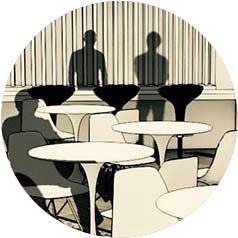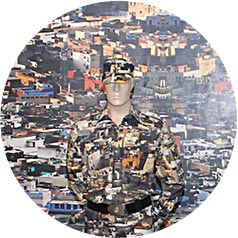D for Design
It’s that time of the year again when college cut-offs soar higher than the scorching temperatures. Merciless and unbearable, the latter at least carries it with hopes of respite in the monsoon while the former reverberates with the shattered dreams of unlived futures dependent on percentages, exams and entrance tests.
A paltry percentage of those who seek to enter college shall make it to the handful of design schools in the country. And of the ones who graduate fewer still will practise the profession. Why is a country with the fastest growing urban agglomerates in the world, plagued with a paucity of product designers, graphic artists, web, fashion, textile designers, interior designers, planners and even architects?
According to recent statistics, there are a measly 40,000 architects in the entire country — Mumbai and Delhi lead the brigade by accounting for almost 20 per cent of the total architectural community, which shows signs of a steady decline in practice. The collective design community barely does any better, servicing primarily the urban populace of 330 million people. Simply put who needs the designers?
For a country with a rich tradition of crafts and arts, it comes as a surprise that the profession of design is seen as primarily an exercise in aesthetics, having more to do with “how the world looks and not how the world is”. Labelled as “luxury” it remains niche both in practice and, worse, in education. Today, when everything from microchips to megacities are a subject of design debate globally, our antiquated approach to design and design-thinking threatens to suck us into obsolescence.
Bodies such as the Indian Design Council and, more so, the premier design institutes in the country need to sit up and take cognizance of the downward spiral of design in India. Between all of them we don’t have a single recognisable museum epitomising Indian design or a platform that promotes design in a manner akin to Shanghai and Seoul. Design schools remain stratified and buried in their little cubicles, each attempting to teach architecture, graphics, product design or fashion to name a few, unrealising that they all need to open up, seeking convergence as much as diversity. Each of them is a product of design-thinking and not necessarily different in method. Astonishing, as it may seem, the process to design the iPhone may be applied to design habitation for tsunami victims as well as HR policy for a corporate. Design in India has to move beyond “jugaad” and commodity fetishism to being the driver of all innovation. It has to be that invisible beam that gives significance and shape to everything we see, touch or make. From our cars to our intersections, from our clothes to ads that sell them, from the books we read to the economy needed to illuminate them — all need to be considered through design. The unseen substance that makes the stuff of life.
Of course, this is easier said than done in institutions burdened by historical ideologies, unbreakable and evolving at a pace far slower than the societies and cities they cater to. Here it is not the uniformity of the education that is an issue or even tradition, but their inability to inspire, motivate and coerce their pupils to break through semantics or to use imagination to arrive at the asymmetrical, out of the box and maverick, disregarding conventional design. Vivid and real in its shiny, new incarnations. Somewhere between “might be” and that which “was” is perhaps where we need to relocate the curriculum for design learning, pointedly addressing a future in palpable transition. This will take a powerful shift in approach.
— Suparna Bhalla
Published on June 30, 2012




























